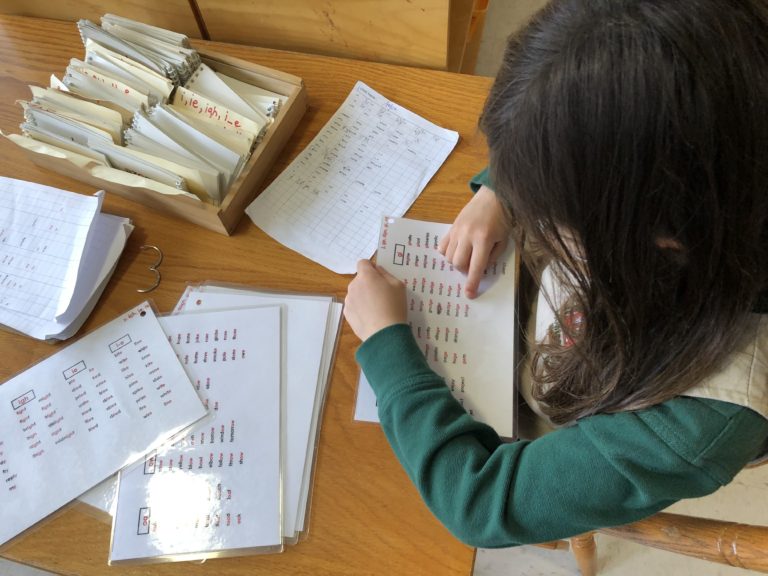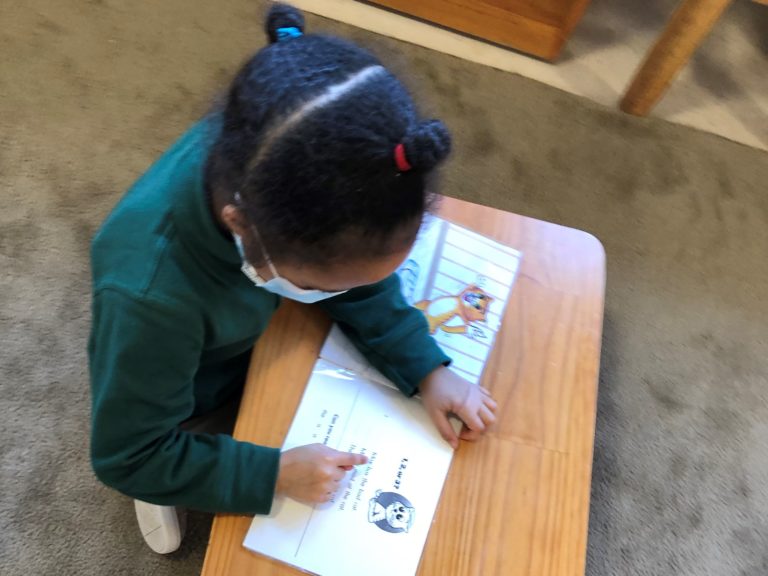
We want to share with you this article by Peter Davidson. It is a good explanation of the benefits of the third year of Montessori school and why it is so important for students.
By now it must be second nature to you all that Montessori Primary classrooms are multi-age environments that follow a 3-year cycle. It is intuitively obvious how students in the first year of this cycle benefit from the arrangement. The 3-year-olds have the benefit of many, many role models for behavior in addition to the adults in the environment. They are surrounded by opportunities to observe and absorb the more advanced work that will someday be their privilege to explore, laying the foundations for it without even realizing they are doing so. And when they stumble or forget a classroom procedure or encounter an obstacle they cannot overcome, there are dozens of older helping hands to assist and guide them along the way.
What is perhaps not so intuitively obvious is how they will benefit when they in turn are third-year students, but I would contend that, in fact, the benefits are even greater then.
Third Year Montesorri Students
It is in the third year that all of the academic preparation of the first two years comes to fruition. The work they did with the numbers 1 through 10, the teens and tens, and then the categories of the decimal system through 9,999 only come to a full expression in the third year as they count the squares and cubes of numbers, move toward an abstraction of the processes of addition, subtraction, multiplication, and division and memorize math facts.
All of the steps of indirect preparation of the hand and the mind that came together in their second year as they began building phonetic words with the cut-out letters of the moveable alphabet, open the entire world of reading, writing, and grammar to them in their third year. As they learn phonograms (2-letter combinations) and non-phonetic “sight” words they round out the mechanics of reading and apply these new skills by labeling the names, parts, and qualities they’ve learned verbally in the previous two years. Their writing moves beyond words to phrases and then sentences, and ultimately to stories and their first reports. It is also in this third year that they begin to develop reading comprehension and lay the groundwork for creative expression through work with the parts of speech, exploring the functions of the article, adjective, noun, verb, adverb, conjunction, and preposition.

Third year students still do practical life exercises, but less for the sake of the process than when they were 3 or 4. Now they do them for the good of the group, taking pride in the health of the plants and animals and the beauty and cleanliness of their classroom environment. They gain a profound sense of accomplishment by applying these skills to the benefit of all.
Having worked with music on a sensorial level in their first two years by matching and then grading the diatonic and chromatic scales, the third year student can now begin to recognize note values and their position on the musical scale, taking the first steps toward reading and writing in the musical language.
Although children will eventually work with the decimal system, the parts of speech, and even perhaps musical notation at some point in a traditional curriculum, it probably will not be for several years. But, they are ready for it now. What a waste to make them wait for years by which time their interest is blunted and the context of two years of careful preparation is lost. It’s as if they had spent two years preparing a sumptuous feast but have to wait for years before they satisfy their hunger.
But all of these academic gains pale in significance to the personality development that comes together in the third year. When they were 3 and 4, they counted on the 5-year-olds to show the way and to help overcome obstacles. Now the 3 and 4 year-olds look to them! Even the teacher relies on them to set the standard and to help the younger ones out of respect for their competence and accomplishment. They not only have the opportunity to develop empathy for the younger, newer, and less capable students, but to act on that empathy in a positive and responsible way. Third year students literally carry themselves differently with the sense of self-esteem and self-assurance that comes with being the leaders of the class.
This feeling of self-confidence, self-worth, and responsibility is perhaps the greatest benefit and accomplishment of the third year and is a nearly irreplaceable experience. This explains why a teacher looks so stricken when one of her students leaves too soon, for she knows better than anyone what a remarkable experience they will be missing.